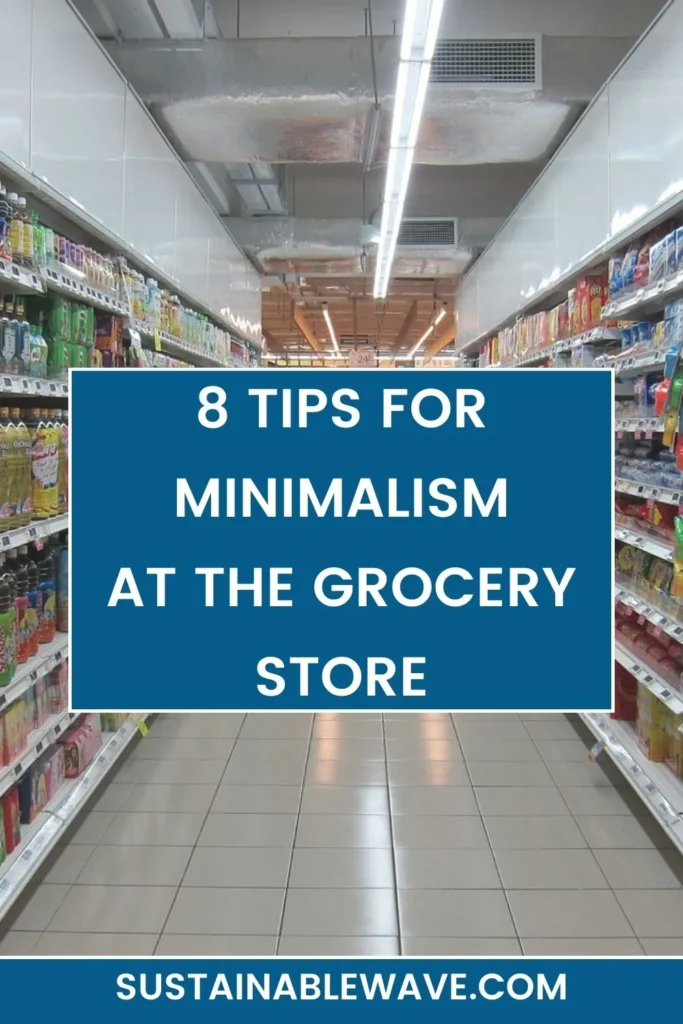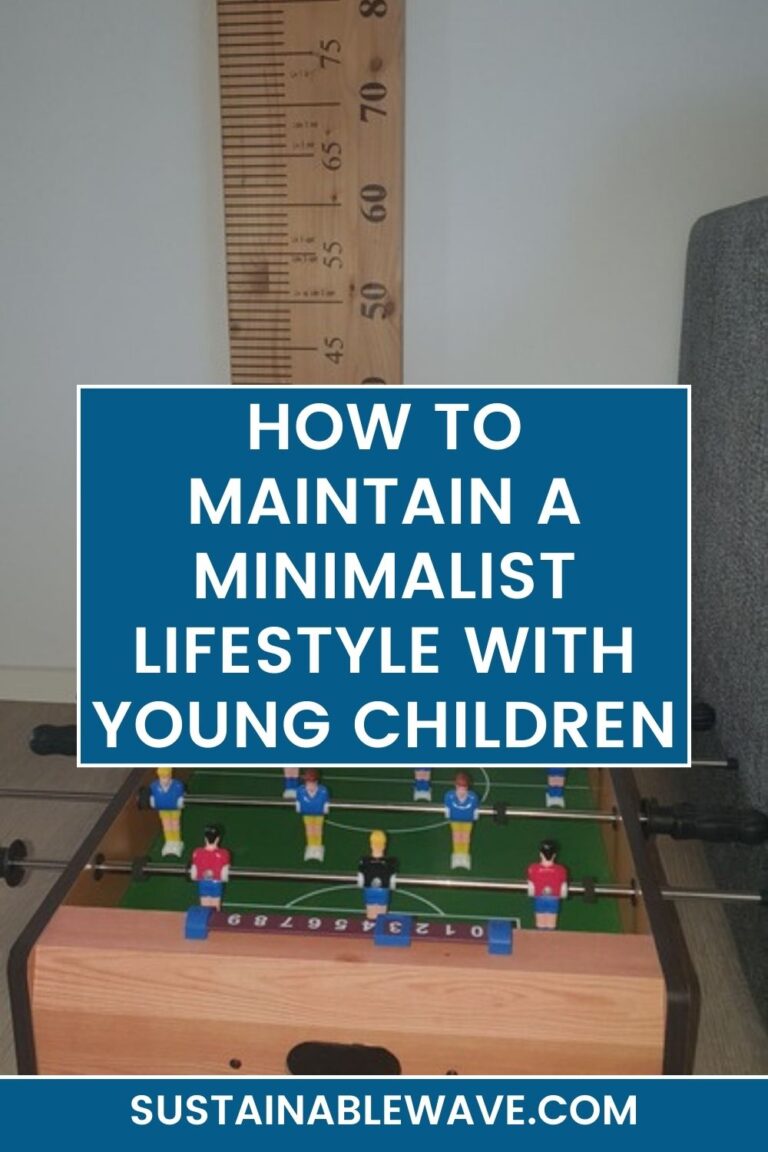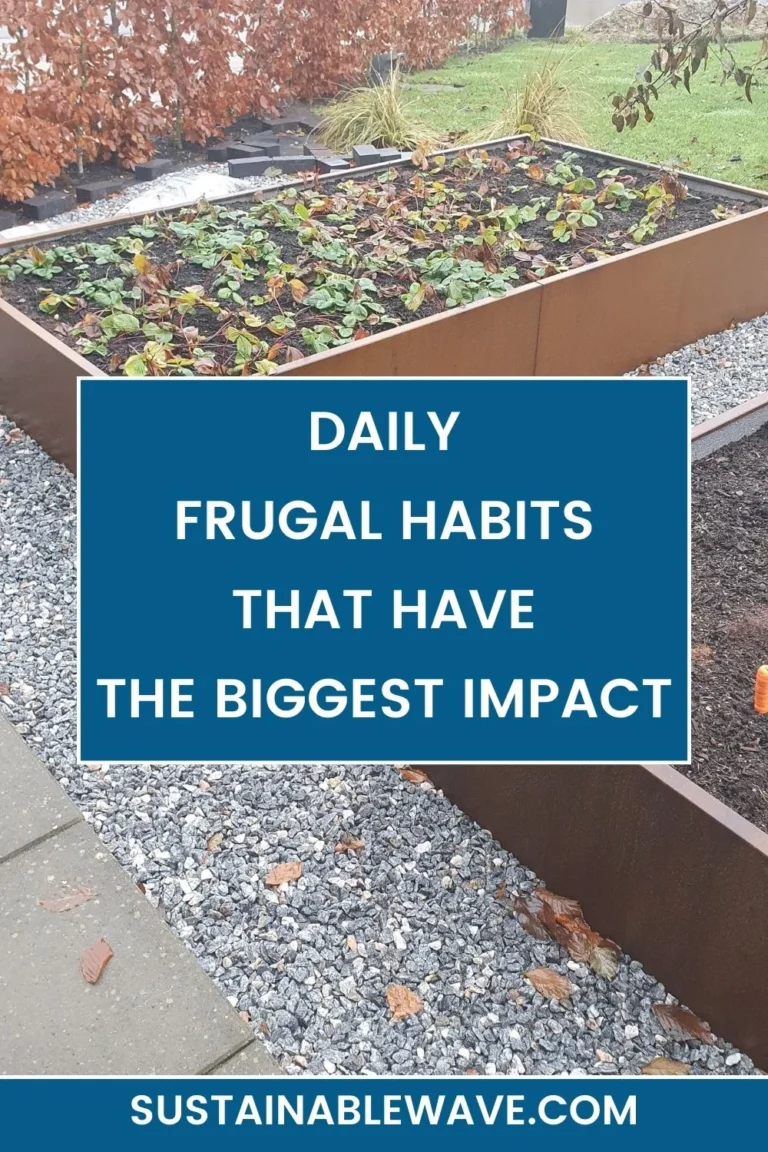Minimalism at the grocery store isn’t about ticking boxes or earning achievements; it’s a conscious approach to consumption that harmonizes with a sustainable lifestyle. Whether it’s grappling with past food insecurities or the desire to waste less while eating healthily, navigating the supermarket aisles can be a challenge.
Minimalism at the grocery store starts with you considering planning meals and making shopping lists, storing produce properly, and utilizing your freezer to extend your food life. Frequent, smaller shopping trips can reduce waste, and simplifying meals helps focus on nutritional value.
This article dives into how we can all shop smarter, reduce waste, and embrace minimalism in our kitchens without sacrificing the joy of eating well.
8 Tips For Minimalism at the Grocery Store

You’ve made your way to the grocery store to catch up at some shopping, but what are some actual tips you should consider when trying to live a minimalist lifestyle, and still have grocery shopping to do each week?
Planning and List-Making
Embarking on your grocery journey with a plan and a list can be a game-changer.
By sitting down to craft a menu for the week and then basing your shopping list on that, you can ensure you buy only what you need. This method not only curtails impulse purchases but also aligns with a minimalist lifestyle, ensuring every item has a purpose in your meals.
It’s about making intentional choices, saving time, and money, and reducing waste. Plus, preplanning meals allows for a balanced diet, especially when catering to specific dietary preferences.
Frequent, Smaller Shopping Trips
Adopting the habit of shopping more frequently, but purchasing less each time, can significantly reduce food waste.
This strategy is especially beneficial for fresh produce and perishable items, ensuring they’re consumed at their peak freshness and nutritional value. Living close to grocery stores makes this approach more feasible, allowing for quick trips to replenish essentials.
This method not only helps in managing a fresher diet but also encourages walking, which is an excellent way to incorporate some physical activity into your routine.
Utilizing the Freezer
Your freezer is an unsung hero in the quest for minimizing waste and making the most of your groceries.
Freezing food that’s about to expire extends its life and gives you a wider window to use it. From vegetables and fruits destined for smoothies to batch-cooked meals for future convenience, the freezer can be your best ally.
This approach not only saves money but also ensures you always have a stock of healthy options at hand, reducing the temptation to opt for less nutritious alternatives.
Keep in mind that not all food can be stored in a freezer for equally long, and you will still have to keep tabs on what you put into your freezer, to ensure you use it before it goes bad.
Limiting Choices and Simplifying Meals
Simplifying your diet by standardizing meals can have profound effects on both your grocery bill and waste levels.
Opting for hearty, simple meals with versatile ingredients that can be mixed and matched offers flexibility and reduces the need for a wide variety of perishables that may go unused.
Embracing a “less is more” attitude towards meal planning doesn’t mean sacrificing nutrition or taste; rather, it’s about finding contentment and satisfaction in simplicity, which can be both liberating and deeply fulfilling.
Proper Storage
The way you store fruits and vegetables can make a significant difference in their shelf life.
Adjusting your refrigerator’s temperature and removing produce from plastic bags, which trap moisture and accelerate spoilage, are key steps. Instead, consider storing them in paper bags or containers that allow for some airflow.
For items that start to wilt, transforming them into soups or stews can be a delicious way to prevent waste.
Understanding and implementing these simple storage techniques can ensure your produce remains fresh longer, allowing you to enjoy their full nutritional benefits.
Emotional and Psychological Strategies
Addressing the emotional and psychological aspects of food shopping can be just as important as the physical act of purchasing groceries.
For those with a history of food insecurity, the impulse to overbuy can be strong. Recognizing and acknowledging these feelings is a crucial first step.
Practicing mindfulness and reflecting on your current food security can help ease the anxiety of not having enough. It’s about reassuring yourself that you will be able to buy food when needed and that it’s okay to buy less frequently.
Finding a balance that feels safe and manageable can significantly reduce stress and promote a more minimalist approach to food shopping.
Minimalism in Cooking and Eating
Adopting a minimalist approach in the kitchen doesn’t mean limiting flavor or satisfaction; it’s about embracing simplicity and focusing on quality over quantity.
Cooking simple, nutritious meals with a few key ingredients not only reduces waste and grocery bills but also highlights the natural flavors of the food.
Whether it’s a protein, grain, and salad combo or versatile staples like rice, noodles, and tortillas, minimalism in cooking encourages creativity within constraints. It’s about making the most of what you have and finding joy in the simplicity of wholesome, home-cooked meals.
Inventory Management
Keeping a good handle on what you already have in your pantry and fridge can prevent overbuying and reduce waste.
Before heading to the store, take stock of your current supplies to avoid purchasing duplicates. This practice, known as inventory management, ensures that you use up what you have before it expires.
Incorporating a “first in, first out” method can help keep your stock fresh and minimize the chances of finding long-forgotten items in the back of the cupboard.
By managing your inventory effectively, you can streamline your grocery shopping, save money, and minimize food waste, all while supporting a minimalist lifestyle.
Final Words About Minimalism at the Grocery Store
Diving into the world of minimalism at the grocery store can feel a bit like embarking on a culinary adventure, minus the clutter.
Imagine navigating the aisles with a secret map—your meal plan and shopping list—guiding you to treasure (also known as the essentials) and away from the siren call of impulse buys. The freezer becomes your ally in the quest against food waste, turning soon-to-spoil goods into future feasts. And who knew that treating veggies with a little TLC by storing them just right could extend their fridge life?
But wait, there’s more! The journey also takes an introspective turn, confronting the dragons of past food insecurities with the shield of mindfulness. In this tale, simplifying meals doesn’t mean dining on gruel but finding joy in the simplicity and nutrition of fewer, versatile ingredients.
As our heroes (that’s us, by the way) adopt these practices, the kitchen transforms into a haven of minimalism, where every item has a purpose, and food waste becomes as mythical as a unicorn. So, next time you set off for the grocery store, remember: it’s not just shopping; it’s an epic quest for sustainability and simplicity.

I’m Thomas, the owner of SustainableWave. Passionately promoting a sustainable planet. With experience in various eco-roles, I’ll share green tips, sustainability hacks, and personal eco-journeys on my blog.






